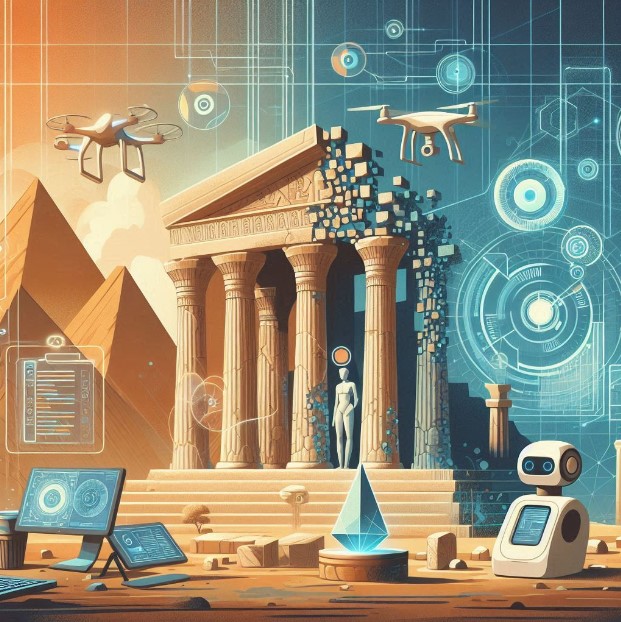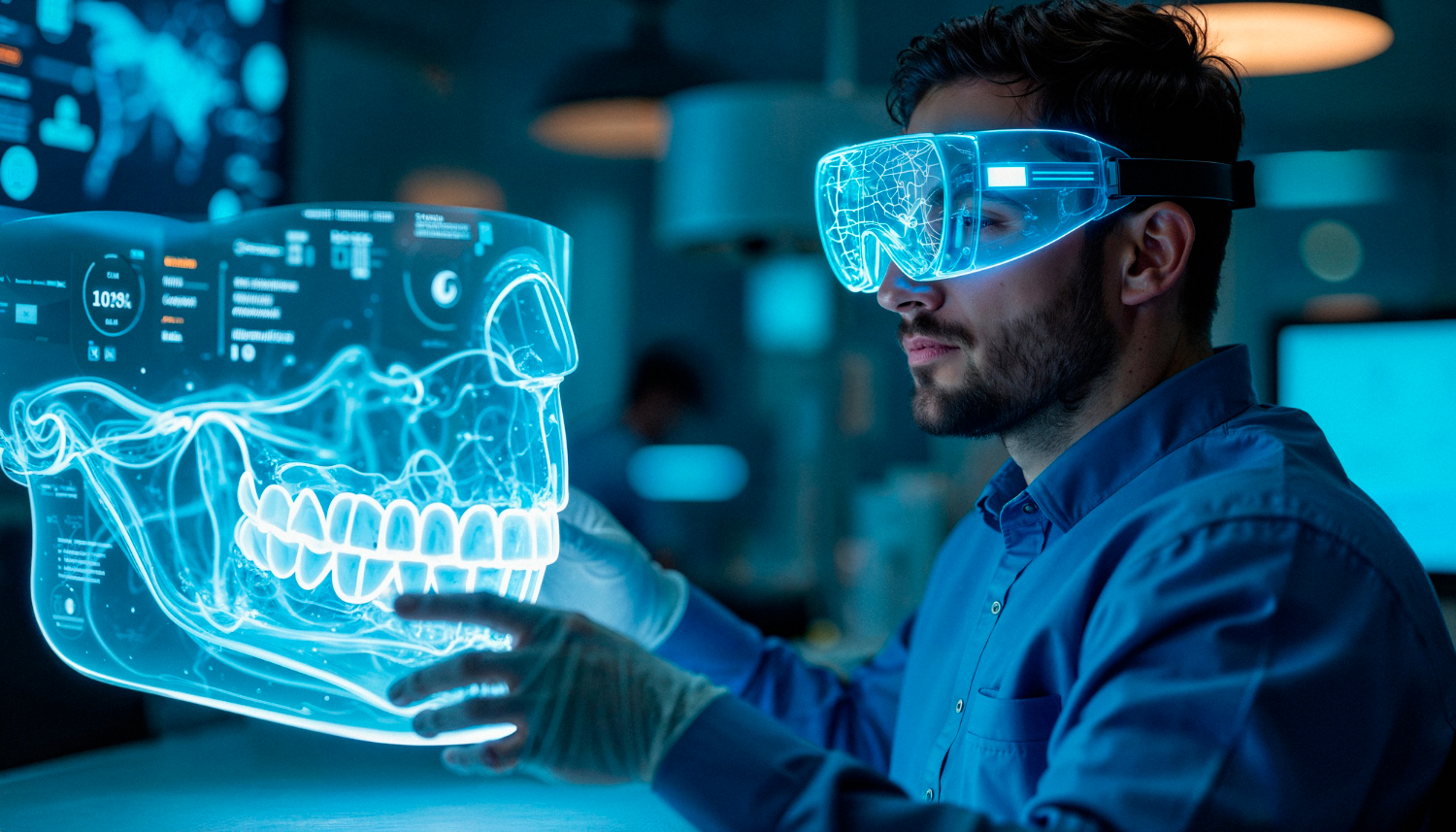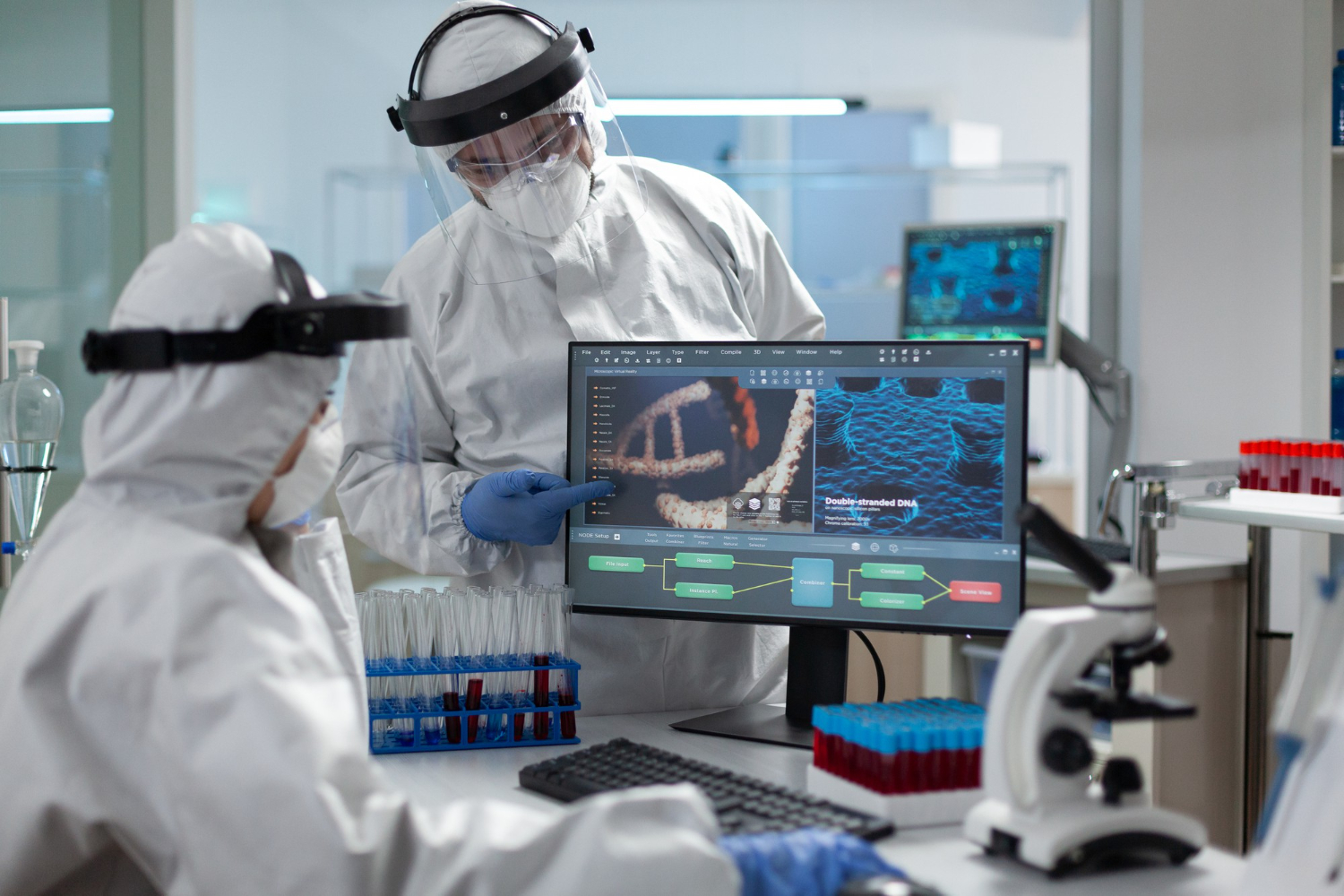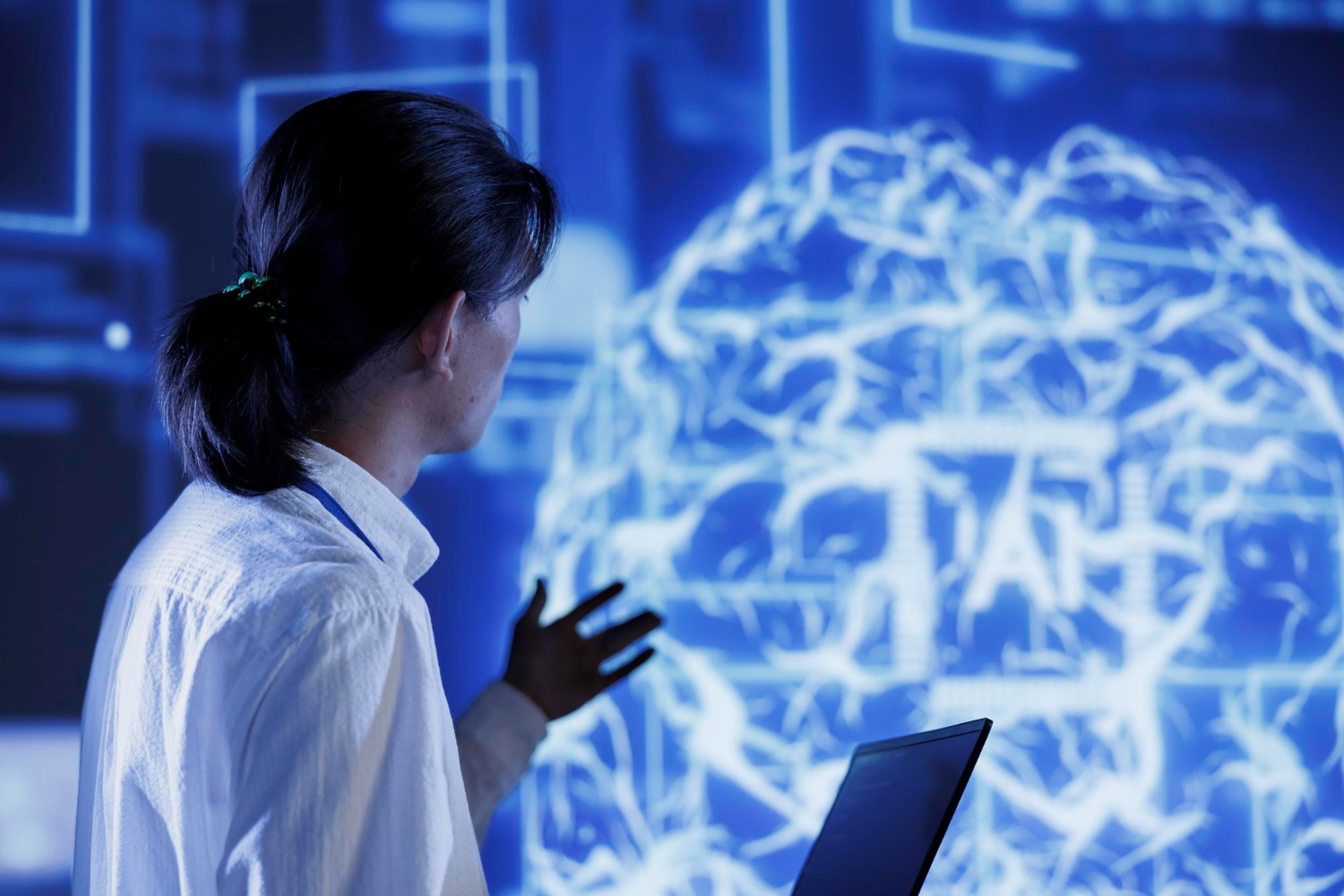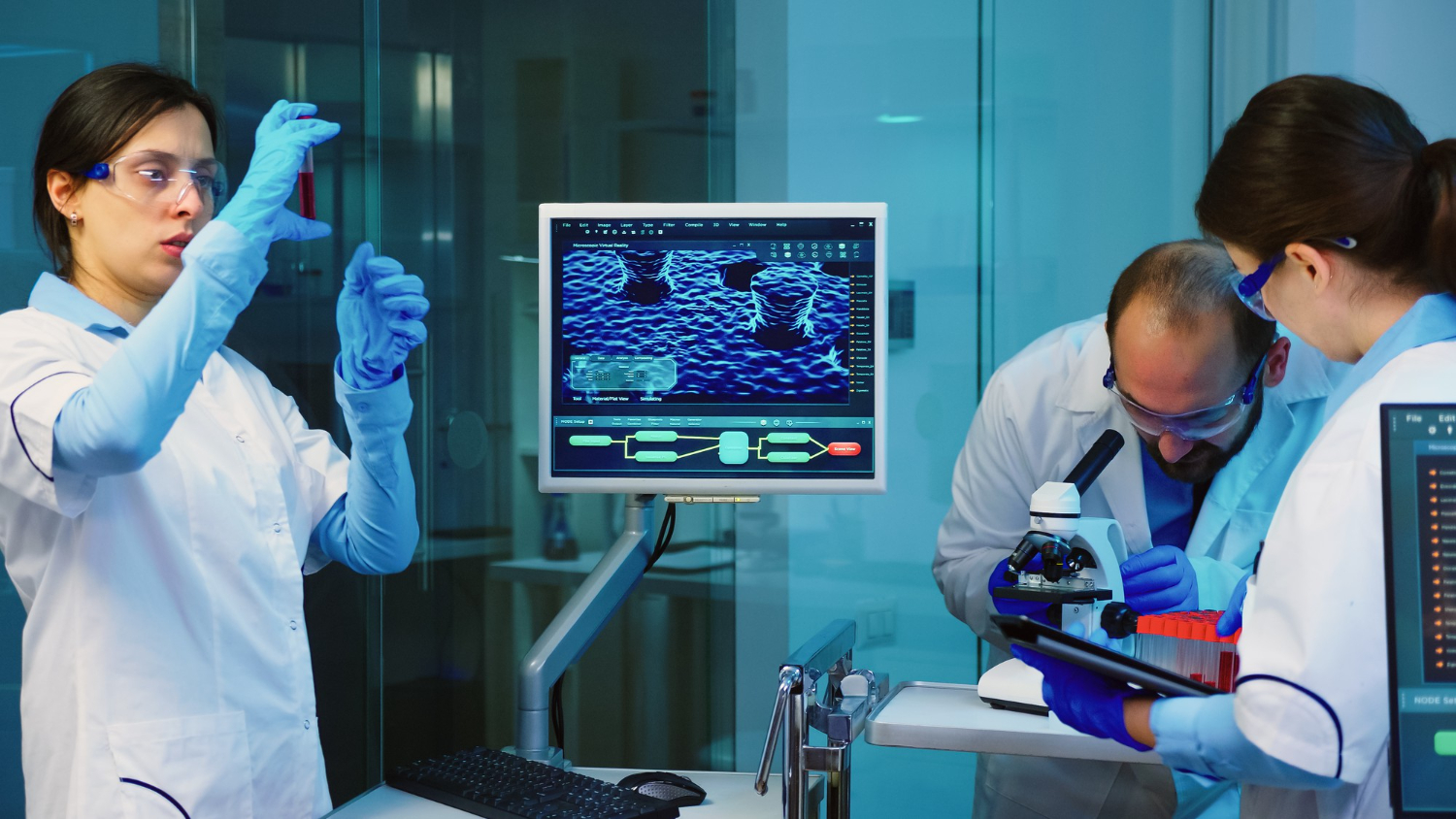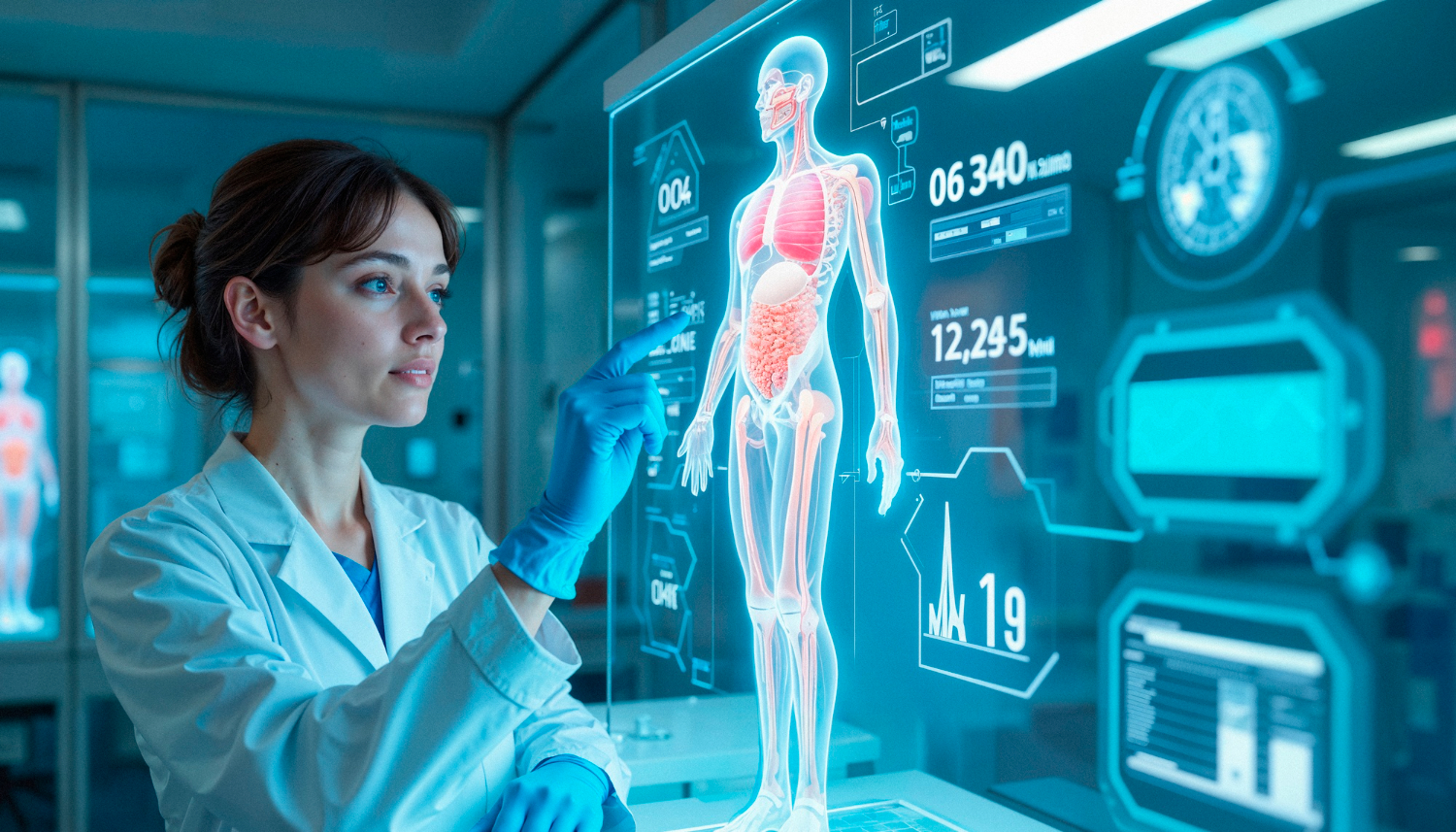Introduction
Imagine you are exploring an Egyptian tomb. Dust swirls in the dim light as you uncover an ancient inscription. You try to decipher the hieroglyphs, but their meaning eludes you. Suddenly, your smart glasses come to life, translating the ancient text and revealing a long-lost secret.
This remarkable fusion of the past and future is made possible by artificial intelligence (AI) in archaeology. This innovative technology is revolutionising how we explore and understand our cultural heritage.
Archaeology is a vast and complex field, brimming with mysteries. Unearthing buried archaeological sites, analysing fragmented artefacts, interpreting ancient languages, and managing extensive data are just some of the formidable challenges faced by human experts. Traditional methods, while invaluable, often fall short in unravelling the intricate tapestry of our past.
You may find it interesting to learn that Turkish researchers fed images of prehistoric Hittite tablets into a machine-learning algorithm. The program decoded and translated the ancient language with over 75% accuracy (Arkeonews, 2023).
Enter AI technology—the modern tool transforming archaeological research. By leveraging machine learning algorithms, computer vision, and NLP, AI can decode ancient scripts, recreate historical environments, and even predict the locations of undiscovered sites. This blend of technology and archaeology offers unprecedented insights, unlocking secrets that have eluded us for centuries. In this article, we will look into the core technologies behind this revolution, exploring how AI-powered systems are reshaping our understanding of the past and enhancing the preservation of cultural heritage.
Core Technologies Used
Artificial Intelligence leverages various advanced technologies, each crucial to transforming archaeology.
Computer vision acts as a sophisticated digital eye, analysing images from excavation sites to identify patterns and anomalies that might elude human experts. This capability is akin to its use in medical imaging, where it detects tumours in radiographs by pinpointing essential details from visual data.
Generative AI functions as a creative force, reconstructing broken artefacts or generating 3D models of ancient ruins from limited information. This technology’s ability to produce realistic new content is evident in applications like generating lifelike human faces or crafting dialogues in video games.
GPU acceleration enhances computational power, speeding up the analysis of complex archaeological data, much like it enhances the performance of video games by processing graphic-intensive tasks rapidly. NLP serves as a translator, interpreting and decoding ancient texts and inscriptions, facilitating understanding in the same way virtual assistants like Siri or Alexa comprehend and respond to spoken language.
Augmented Reality (AR), Virtual Reality (VR), and Extended Reality (XR) offer immersive experiences, allowing researchers and the public to explore historical sites virtually, similar to their applications in gaming and real estate for creating interactive environments.
Lastly, IoT edge computing involves smart sensors placed at excavation sites, collecting and processing data locally, which reduces the need for constant internet access. This is comparable to its use in agriculture, where similar setups monitor soil conditions to optimise crop growth.
Together, these AI-powered technologies enhance our ability to study and preserve cultural heritage, making archaeological research more efficient and insightful.
Use Cases
Finding Hidden Treasures: AI & Remote Sensing
Remote sensing, a technique using aerial and satellite imagery to detect and map archaeological sites, has long been a staple in archaeology. Traditionally, this process involves manually sifting through large volumes of images to identify subtle ground disturbances indicative of buried structures. However, AI technology significantly enhances this method.
Computer vision algorithms, trained to recognise patterns that might signal ancient ruins, can analyse remote sensing data more quickly and accurately than human experts. For instance, AI-powered systems can detect changes in vegetation or soil that indicate the presence of archaeological sites beneath the surface.
The Global Remote Sensing Technology Market size was valued at USD 16,744.26 million in 2023 and is expected to grow at a CAGR of 12.3%, generating USD 42,340.89 million during the forecast period 2024–2032 (Straits Research, 2024).
GPU acceleration plays a crucial role in this application by enabling the rapid processing of vast amounts of remote-sensing data. By harnessing the power of GPUs, researchers can quickly analyse high-resolution images and detect potential excavation sites that would otherwise remain hidden.
This integration of AI and remote sensing not only speeds up the discovery process but also opens new possibilities for finding archaeological sites in inaccessible or remote areas. This approach has proven effective in regions like Egypt and Peru, where remote sensing combined with AI has uncovered previously unknown ancient structures and pathways.
Deciphering the Past: AI & Artefact Analysis
Analysing artefacts involves a meticulous process of classification and interpretation. Traditionally, this has been a labour-intensive task requiring detailed manual examination. However, AI algorithms can streamline this process.
Computer vision technology can automatically classify artefacts based on shape, size, and material, making it easier to catalogue and study large collections. For example, AI can differentiate between pottery shards from different historical periods or cultures by analysing subtle differences in design and composition.
NLP further enhances artefact analysis by deciphering ancient texts and inscriptions. NLP algorithms, trained on historical languages and scripts, can translate and interpret writings found on artefacts, providing context and meaning. This technology has been instrumental in translating ancient languages like Egyptian hieroglyphs and Sumerian cuneiform, helping researchers understand the historical significance of artefacts. The combination of computer vision and NLP allows for a more comprehensive understanding of artefacts, linking physical characteristics with historical and cultural context.
Rebuilding Lost Worlds: AI & Archaeological Reconstruction
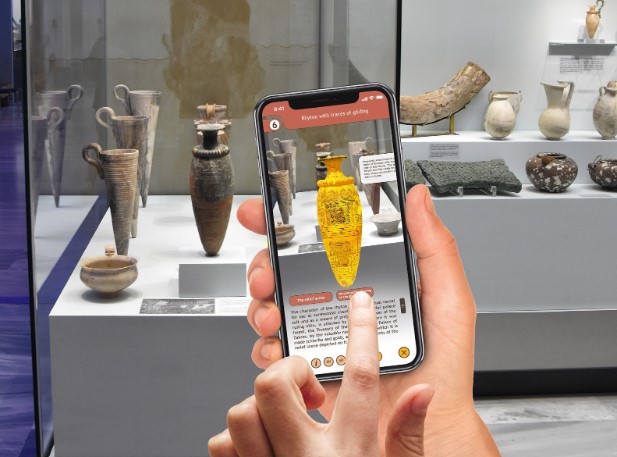
Reconstructing past structures and landscapes from fragmented remains is a significant challenge in archaeology. Generative AI provides a powerful solution by creating 3D models of ancient buildings, cities, and landscapes based on partial data. By analysing available archaeological evidence, generative AI can extrapolate missing elements and generate detailed reconstructions. These models offer insights into the architectural styles, urban planning, and daily life of past civilisations.
AR/VR/MR/XR technologies enhance these reconstructions by providing immersive experiences. Through virtual reality, researchers and the public can explore reconstructed historical environments, walk through ancient cities or examine artefacts in their original settings. Moreover, the 3D Reconstruction Services market size is expected to reach USD 2.6 billion by 2027, growing at a CAGR of +15% from 2021 to 2027 (Chede, 2023).
This not only aids in research but also makes archaeology more accessible and engaging for broader audiences. Real-world applications include the virtual reconstruction of sites like Pompeii and the Acropolis, allowing users to experience these historical places as they once were.
The Wisdom of Crowds: AI & Collaborative Research
Archaeology generates vast amounts of data, from excavation reports to research papers. Analysing this data manually to identify patterns and connections is daunting. NLP addresses this challenge by automating the analysis of textual data. By processing large corpora of research papers, NLP can identify trends, correlations, and gaps in the existing knowledge, guiding future research directions.
IoT edge computing complements this by providing real-time monitoring of excavation sites. Smart sensors placed at sites can track environmental conditions, structural stability, and other variables, transmitting data to researchers instantly. This allows for more responsive and adaptive excavation strategies, improving efficiency and preserving fragile sites. Together, NLP and IoT edge computing facilitate a collaborative approach to archaeological research, integrating data from diverse sources for a more holistic understanding of historical contexts.
Preserving the Past for the Future: AI & Digital Archiving
Preserving artefacts is crucial for maintaining cultural heritage but poses challenges such as physical degradation and limited storage. Computer vision and 3D scanning offer solutions by creating digital replicas of artefacts. These digital models capture intricate details, ensuring that even if the physical artefact deteriorates, its digital counterpart remains accessible for study and display.
Cloud storage solutions provide secure and scalable options for archiving these digital replicas. By storing data in the cloud, institutions can safeguard artefacts from physical damage and ensure long-term accessibility. This approach has been employed by museums and cultural institutions worldwide, such as the Smithsonian Institution, which uses digital archiving to preserve and share its vast collections with a global audience. The integration of AI and digital technologies thus ensures that cultural heritage is preserved for future generations, while also making it more widely available for research and education.
Challenges and Future Directions
Despite its transformative potential, the application of AI in archaeology faces several challenges. Data bias is a significant issue, as AI systems rely on training data that may not fully represent the diversity of archaeological contexts. This can lead to biased or incomplete interpretations.
The necessity for human expertise remains critical, as AI lacks the nuanced understanding and intuition that human archaeologists bring to the field. Furthermore, the ethical implications of AI-powered discoveries must be carefully considered. AI-driven excavations could disrupt sites or misinterpret cultural artefacts, leading to potential harm or misrepresentation of historical narratives.
Looking to the future, advancements in AI promise to address these challenges and enhance its role in archaeology. Improving the explainability of AI models will help researchers understand how AI arrives at its conclusions, fostering greater trust and transparency.
Developing new AI-powered tools for excavation and analysis will enable more precise and less invasive exploration of archaeological sites. Innovations in natural language processing and computer vision will continue to enhance our ability to decode ancient texts and analyse artefacts, bridging gaps in our understanding of the past. As AI technology evolves, its integration with traditional archaeological methods will likely lead to a more dynamic and insightful exploration of our cultural heritage.
What We Can Offer as TechnoLynx
TechnoLynx stands at the forefront of innovative tech solutions, offering a suite of services that can revolutionise various aspects of archaeology. Our expertise in computer vision, NLP, IoT edge computing, generative AI, and AR/VR/XR can significantly enhance the capabilities of archaeologists, museums, and government agencies.
For Archaeologists
TechnoLynx can transform your research process by developing advanced computer vision tools that analyse excavation photos to detect and classify artefacts. Our technology streamlines artefact identification, reducing manual effort and increasing accuracy. For deciphering ancient texts, our experience with NLP would offer you solutions that can translate and interpret inscriptions, offering rapid insights into historical documents and artefacts.
Additionally, our deep understanding of IoT edge computing systems would provide development for real-time data monitoring at excavation sites, ensuring timely updates on environmental conditions and site stability, which is critical for preserving fragile sites during excavations.
For Museums
TechnoLynx can elevate your exhibits with generative AI and AR/VR/XR technologies. Our generative AI expertise offers you the creation of realistic 3D models of historical artefacts and structures, allowing visitors to visualise ancient worlds with unprecedented detail.
With AR/VR/XR, we offer immersive experiences that let museum-goers explore reconstructed historical sites, interact with lifelike digital artefacts, and engage with history in a dynamic, interactive way. These cutting-edge technologies not only enhance educational value but also attract and engage a broader audience, making history more accessible and compelling.
For Government Agencies and Research Institutions
TechnoLynx provides comprehensive solutions for managing and analysing large datasets in archaeological research. Our NLP capabilities can sift through extensive research publications and archival documents to uncover patterns and insights, guiding strategic research initiatives. IoT edge computing ensures that data from remote or sensitive excavation sites is securely collected and processed locally, reducing reliance on constant connectivity and enhancing data reliability. Our competence in computer vision can assist in the automated analysis of satellite and aerial imagery for site detection, supporting large-scale archaeological surveys and conservation efforts.
Conclusion
The convergence of AI and archaeology ignites a new era of discovery. From deciphering enigmatic inscriptions to resurrecting long-lost civilisations, this potent synergy empowers us to delve into the past with unparalleled precision and granularity.
Explore how TechnoLynx can enhance your archaeological endeavours with our advanced understanding and reliable development of AI solutions. Contact us today to bring the past into the future and experience the transformative power of technology in uncovering history.
References
-
Arkeonews. (2023, January 9). Turkish researchers use Artificial Intelligence to read cuneatic Hittite tablets. Arkeonews. Retrieved June 20, 2024.
-
Chede, P. (2023, March 14). 3D Reconstruction Services Market. AI Market Report.
-
Kastrinakis, G. (2023, April 7). Exploring Minoan History Through Augmented Reality. LinkedIn. Retrieved June 20, 2024.
-
Straits Research. (2024). Remote Sensing Technology Market Size, Trends, Forecast to 2030. Straits Research. Retrieved June 19, 2024.

